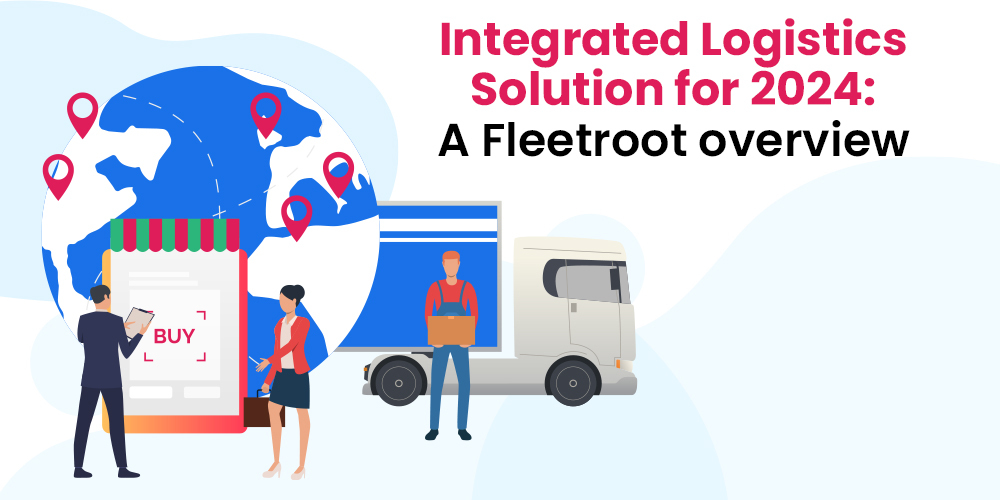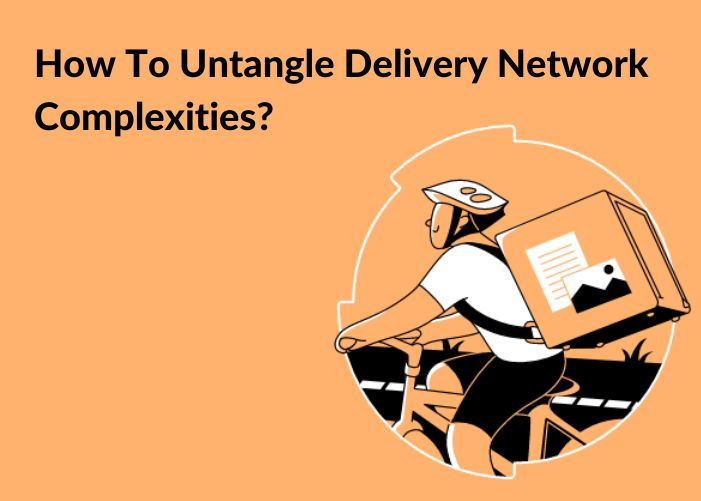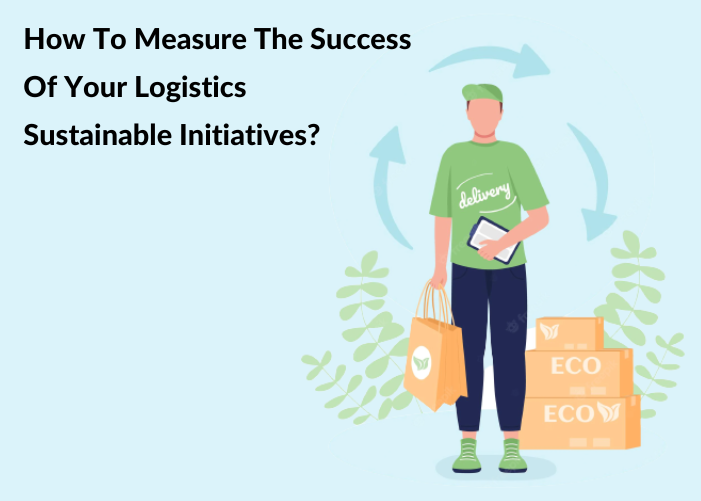Table of Contents:
- Introduction
- Blockchain Technology for Supply Chain Transparency
- AI-Powered Demand Forecasting
- Real-time Tracking and IoT Devices
- Autonomous Vehicles and Drones
- Robotic Process Automation (RPA)
- Digital Twin Technology
- Green Logistics and Sustainability
- Collaborative Platforms for Stakeholder Communication
- Cybersecurity Measures
- Data Analytics for Continuous Improvement
- How Fleetroot Can Help
- FAQs (Frequently Asked Questions)
- Conclusion
Introduction
In the relentless pursuit of excellence in logistics, 2024 brings forth a groundbreaking integrated solution that promises to redefine supply chain dynamics. This comprehensive approach incorporates cutting-edge technologies and innovative practices to create a robust, efficient, and sustainable supply chain ecosystem. Let’s delve into the key components of this logistics revolution.
- Blockchain Technology for Supply Chain Transparency
At the heart of this integrated logistics solution lies the incorporation of a blockchain-based system. This groundbreaking technology aims to enhance transparency and traceability throughout the entire supply chain. By leveraging blockchain, the goal is to significantly reduce instances of fraud and errors, ultimately fostering trust among stakeholders. The immutability of blockchain ensures secure and tamper-resistant recording of every transaction, establishing a transparent and accountable ledger.
- AI-Powered Demand Forecasting
In the realm of demand forecasting, artificial intelligence (AI) and machine learning (ML) algorithms play a pivotal role. These advanced technologies empower businesses to analyze historical data, decipher market trends, and consider external variables with unparalleled accuracy. The outcome is a demand forecasting mechanism that optimizes inventory management, mitigates risks associated with overstock or stockouts, and fine-tunes the supply chain to meet consumer demands precisely.
- Real-time Tracking and IoT Devices
Real-time tracking, facilitated by the deployment of Internet of Things (IoT) devices, is a critical component for ensuring visibility across shipments, vehicles, and inventory. Combining IoT devices with GPS technology provides accurate and live insights into the movement of goods. This capability not only enables precise route optimization but also ensures timely deliveries, enhancing the overall efficiency of the logistics process.
- Autonomous Vehicles and Drones
Exploring the integration of autonomous vehicles and drones marks a significant shift in last-mile delivery. This transformative approach goes beyond merely reducing delivery times and costs; it fundamentally redefines the logistics landscape by enhancing operational efficiency. By delving into these technologies, the aim is to offer businesses a forward-looking solution that optimizes the final leg of the supply chain, ensuring faster and more cost-effective deliveries.
- Robotic Process Automation (RPA)
Efficiency takes center stage with the implementation of Robotic Process Automation (RPA). Repetitive and time-consuming tasks, such as data entry, invoicing, and order processing, are seamlessly automated. This strategic move not only increases operational efficiency but also liberates human resources from mundane tasks, allowing them to focus on more strategic and value-added roles within the logistics ecosystem.
- Digital Twin Technology
The introduction of Digital Twin Technology opens up new horizons in logistics operations. By creating virtual replicas of physical assets, warehouses, and transportation systems, businesses can engage in sophisticated simulation, monitoring, and optimization. This virtual environment allows for meticulous planning and scenario testing, leading to improved decision-making and heightened operational efficiency.
- Green Logistics and Sustainability
Environmental responsibility takes a prominent role in this integrated logistics solution. Sustainable practices, including route optimization to minimize carbon emissions, the adoption of eco-friendly packaging, and the incorporation of electric or hybrid vehicles, underscore the commitment to environmental goals. These practices contribute to a greener planet and resonate with environmentally conscious consumers, aligning businesses with evolving market preferences.
- Collaborative Platforms for Stakeholder Communication
Effective communication is a cornerstone of efficient logistics. This solution introduces a collaborative platform that seamlessly connects all stakeholders in the supply chain – from manufacturers and suppliers to logistics providers and retailers. This real-time communication hub fosters improved coordination and responsiveness, ensuring that every link in the supply chain operates in harmony.
- Cybersecurity Measures
In an era where data is a critical asset, prioritizing cybersecurity measures is non-negotiable. This integrated logistics solution places a premium on protecting sensitive data and ensuring the integrity of the supply chain. Robust encryption, regular security audits, and comprehensive employee training collectively form a robust defense against potential cyber threats, safeguarding the entire logistics ecosystem.
- Data Analytics for Continuous Improvement
Continuous improvement is at the core of this logistics philosophy, and advanced data analytics plays a pivotal role in this pursuit. By monitoring key performance indicators (KPIs) in real-time, businesses can identify areas for enhancement. This data-driven approach empowers the logistics system to adapt swiftly to changing market conditions and evolving customer demands, ensuring a resilient and responsive supply chain.
How Fleetroot Can Help
In the era of transformative logistics, Fleetroot emerges as a key enabler of these advanced technologies and practices. Our integrated logistics solution offers:
– AI-Powered Insights: Our platform harnesses the power of AI to provide accurate demand forecasting, optimizing inventory levels and minimizing the risks of stockouts or overstock.
– Real-Time Visibility: Fleetroot leverages IoT devices and GPS technology for real-time tracking, enabling precise route optimization and ensuring timely deliveries.
– Autonomous Fleet Management: Explore the integration of autonomous vehicles and drones with Fleetroot for last-mile delivery, reducing costs, and enhancing efficiency.
– Sustainable Practices: Fleetroot supports green logistics solution and sustainability with features like route optimization and monitoring eco-friendly practices.
– Collaborative Communication: Our collaborative platform connects all stakeholders, fostering real-time communication, improving coordination, and enhancing responsiveness.
– Cybersecurity Focus: Fleetroot prioritizes cybersecurity, ensuring the protection of sensitive data and maintaining the integrity of the supply chain.
– Data-Driven Decision-Making: Our platform utilizes advanced data analytics, enabling continuous monitoring of KPIs and facilitating data-driven decision-making.
FAQs (Frequently Asked Questions)
- Can Blockchain Technology prevent all instances of fraud in the supply chain?
While blockchain significantly enhances transparency and traceability, it cannot eliminate all types of fraud. It serves as a powerful deterrent, reducing the likelihood of fraudulent activities and enhancing trust among stakeholders.
- How does AI-Powered Demand Forecasting optimize inventory management?
AI analyzes historical data, market trends, and external factors to accurately predict demand. This optimization helps in maintaining the right inventory levels, minimizing the risks of overstock or stockouts, and improving overall supply chain efficiency.
- What benefits does Real-time Tracking and IoT Devices bring to logistics operations?
Real-time tracking, enabled by IoT devices and GPS technology, provides accurate visibility into shipments and vehicles. This feature facilitates precise route optimization, timely deliveries, and enhanced logistics process efficiency.
- Are Autonomous Vehicles and Drones viable for all types of deliveries?
While autonomous vehicles and drones offer efficiency gains, their viability depends on factors such as delivery distances, local regulations, and the nature of the goods being transported. They are particularly effective for last-mile deliveries.
- How does Robotic Process Automation (RPA) contribute to operational efficiency?
RPA automates repetitive tasks like data entry and order processing, reducing manual effort. This efficiency improvement allows human resources to focus on strategic tasks, enhancing overall operational effectiveness.
- What is the purpose of creating Digital Twins in logistics operations?
Digital Twins replicate physical assets virtually, enabling sophisticated simulation, monitoring, and optimization. This technology enhances decision-making processes by providing a detailed virtual environment for logistics operations.
- How does Green Logistics contribute to sustainability in the supply chain?
Green Logistics incorporates eco-friendly practices such as route optimization, the use of sustainable packaging, and adopting electric or hybrid vehicles. These measures reduce carbon emissions and appeal to environmentally conscious consumers.
- Can Collaborative Platforms improve coordination among supply chain stakeholders?
Yes, Collaborative Platforms connect manufacturers, suppliers, logistics solution providers, and retailers in real-time. This connectivity fosters improved coordination and responsiveness, enhancing overall supply chain efficiency.
- What cybersecurity measures are implemented to protect sensitive data in the supply chain?
The integrated logistics solution prioritizes cybersecurity with robust encryption, regular security audits, and comprehensive employee training. These measures collectively safeguard sensitive data and maintain the integrity of the supply chain.
- How does Data Analytics drive continuous improvement in logistics operations?
Data Analytics monitors key performance indicators (KPIs) in real-time, identifying areas for improvement. This data-driven approach enables logistics systems to adapt swiftly to changing market conditions and evolving customer demands, ensuring a responsive and efficient supply chain.
Conclusion
As we usher in 2024, the integrated logistics solution presented here signifies not just a technological evolution but a paradigm shift in supply chain management. Fleetroot stands at the forefront, ready to empower businesses with a comprehensive and forward-thinking logistics platform. Join us on this transformative journey, where logistics isn’t just a process but a strategic advantage for your business.




